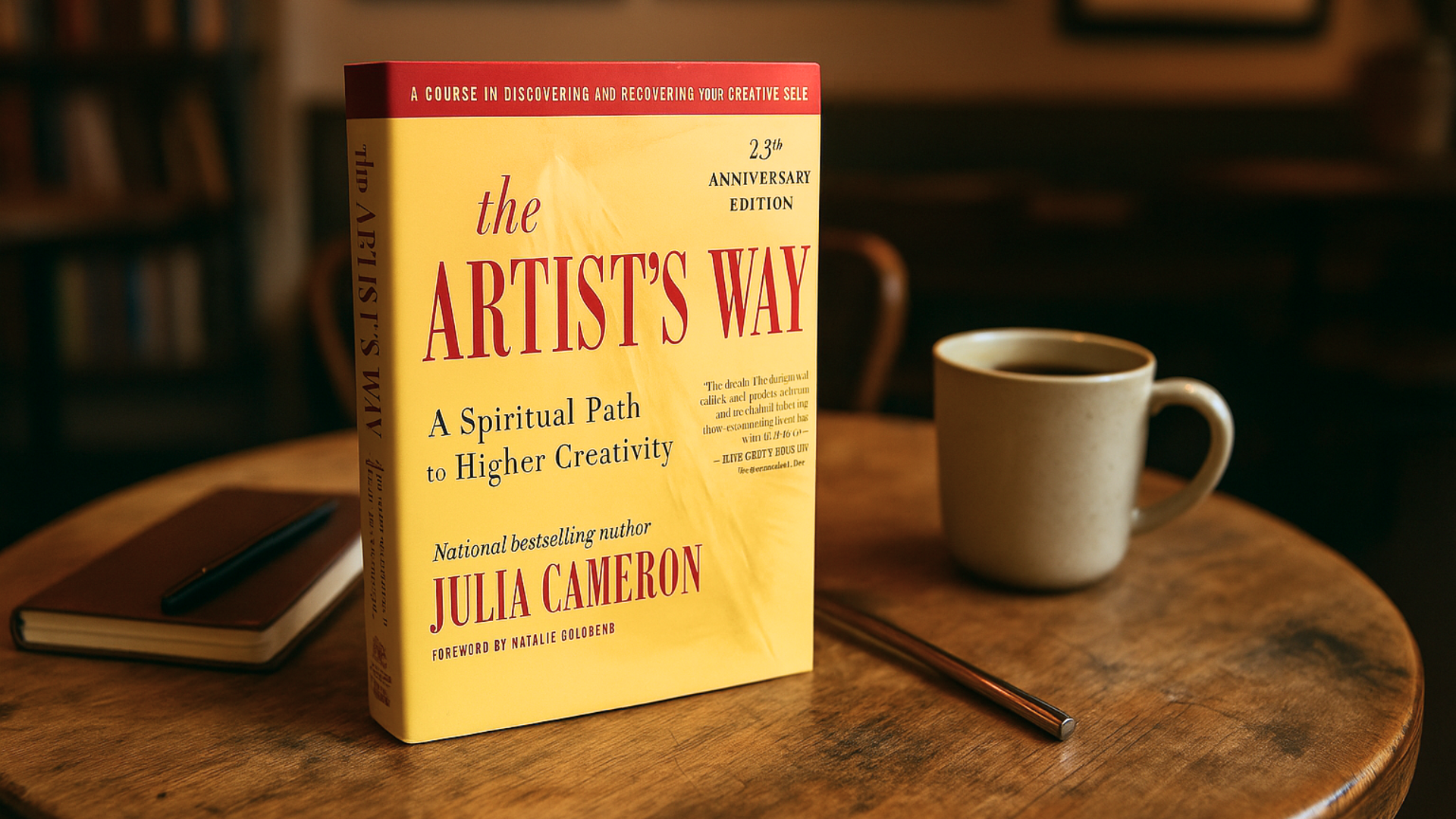How The Artist’s Way Helps You Reclaim Joy Through Creative Practice

Book Review: The Artist’s Way by Julia Cameron
A 12-week journey of creative reconnection, spiritual restoration, and practical self-discovery
It is rare for a book to feel like both a guide and a companion, but The Artist’s Way manages to do just that. First published in 1992 and still widely used more than three decades later, Julia Cameron’s now-classic workbook gently encourages readers to recover their creativity by making small, deliberate changes to their inner and outer lives. It has become a touchstone for blocked artists, burned-out professionals, and anyone yearning for a more expressive, spiritually connected life.
This is not a book you read passively. It is a book you live with, wrestle with, and often return to over time. Cameron’s message is both reassuring and radical. She reminds us that creativity is innate, and with care and consistency, it can be reawakened.
What the book promises
The Artist’s Way offers a path back to the creative self. Whether or not you identify as an artist, Cameron argues that creativity is a natural part of being human. She invites readers to remove internal barriers, notice limiting beliefs, and build daily practices that create space for expression and exploration.
The book is structured as a 12-week journey. Each week focuses on recovering a “sense” that supports creativity. These include safety, identity, power, connection, strength, compassion, and faith. The overall promise is that through commitment to these practices, readers will experience meaningful creative restoration.
What the book delivers
Cameron’s method is anchored by two central tools: Morning Pages and Artist Dates. Morning Pages are three pages of longhand, stream-of-consciousness writing done each morning. They are not meant to be shared or reviewed. Their purpose is to clear mental clutter and create a space for deeper insight. Artist Dates are weekly solo outings designed to foster play and replenish inspiration. These could be as simple as visiting a secondhand shop, taking a walk, or flipping through art books at the library.
Each chapter introduces a weekly theme, followed by short essays, self-reflection questions, and creative tasks. Some assignments are practical, like cleaning out a workspace or collecting affirmations. Others are more introspective, such as writing letters to your younger self or identifying old creative injuries.
Cameron shares stories from her own life and from people who have used this process. The examples are diverse and encouraging, showing how creativity can return in surprising ways, often after long periods of silence.
Style and structure
The book’s format is predictable in the best sense. Each week begins with a theme and ends with a set of suggested tasks and a “check-in” to help readers stay engaged. This regular rhythm builds a sense of momentum. There is enough structure to support commitment, but enough flexibility to allow for variation in pace or participation.
Cameron’s tone is steady and reassuring. She speaks directly and often repeats key ideas to reinforce them. Her voice is spiritual without being rigid, and while she uses terms like God and creative source, she consistently reminds readers to choose language that feels right for them. There is space here for readers of all beliefs, including those who prefer a secular or nature-based perspective.
Where the book shines
The most enduring strength of The Artist’s Way is its balance of practical tools and emotional permission. Cameron is not asking readers to produce polished work or set ambitious goals. Instead, she asks them to show up, notice what is blocking them, and gently move through resistance.
She also deconstructs the idea that art must be serious or perfect. By encouraging messy, playful, and sometimes “bad” art, she makes the creative process feel accessible again. Readers are not expected to be artists in the traditional sense. They are asked only to be willing participants in their own creative lives.
The Morning Pages practice is especially effective. It helps many readers quiet the inner critic and develop a daily writing habit that leads to surprising clarity. The Artist Date, while deceptively simple, encourages joy and curiosity in a way that many adults have forgotten how to access.
Light limitations
While the book is structured as a 12-week course, some readers may find it difficult to keep pace with the weekly format. Those who fall behind might feel discouraged, though Cameron encourages readers to adapt the process to their own timelines.
The spiritual framing, while inclusive, may not resonate with every reader. Some may find the language too mystical, while others may wish it were even more grounded. Cameron navigates this well, but individual preferences will vary.
Readers managing full-time caregiving or complex life circumstances may find some exercises challenging to fit in. However, Cameron encourages creativity in how each tool is applied, making space for adaptation.
Final thoughts
The Artist’s Way is not just a book to be read. It is a process to be experienced. It meets readers at the intersection of creativity, reflection, and personal growth. Whether you are returning to art after a long time away or exploring creativity for the first time, Cameron offers structure without pressure and encouragement without judgment.
The book does not promise transformation in twelve weeks, but it does create the conditions for something important to begin. It is especially meaningful for those who feel disconnected from their imagination, their voice, or their sense of inner rhythm. It helps restore not only creative habits, but creative identity.
For anyone feeling stuck, stalled, or silent, The Artist’s Way is a compassionate and enduring companion.
Highly recommended for women, artists, and curious creatives who want to reconnect with their sense of joy, purpose, and possibility through a consistent and nourishing creative practice.